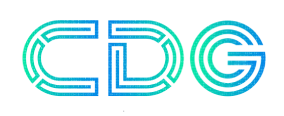Compress images with tools like TinyPNG, enable browser caching, and use a CDN to improve load times, particularly for global visitors. Optimizing site performance is crucial for boosting user experience and search engine results for your client’s location-specific pages. In addition to keeping users interested, a fast-loading website lowers bounce rates, improving general on-page SEO performance. Finally, get your agency listed in local and industry directories for backlinks.
It’s no secret that how fast your site loads (page speed) has long been a Google ranking factor. It’ll provide you with an overview of your top pages to optimize. And give you insights into your potential traffic gains if you make the right changes. It’s not always possible (or logical) to have the target keyword immediately at the start. On-Page SEO is one of the FASTEST ways to improve your Google rankings.
How to Use ChatGPT to Support Link Building: Boost Your SEO in...
Stay attuned to industry trends and algorithm updates to ensure your image optimization strategies remain effective in the dynamic digital landscape. User engagement is closely tied to page load speed and responsive design. Mobile users constitute a significant portion of online traffic, and images that are not optimized for various screen sizes can deter engagement.
Analytify can help you easily identify broken links, enabling you to fix them quickly, improving your website’s SEO performance, and ensuring a seamless user experience. Combining GA4 and Analytify ensures a comprehensive and user-friendly approach to tracking and enhancing keyword performance for improved search engine visibility. Long gone are the days of ranking manipulation tactics that aimed to increase keyword positions in search results.
Katrina Dalao of Referral Rock writes, “it always helps to put yourself in the reader’s shoes and do a search for the target keyword. Look at the AveragePosition at the end to understand where your keywords are ranking. And, in this case, it’s this blog post where we share 29 tried and tested tips from experts who have improved their search positions. Have you been doing your best but still aren’t ranking inthe search engine results pages (SERPs)? Link your Google Business Profile to a well-designed, relevant landing page on your website.
But I also noticed that these posts gave out search engine optimization tips for voice search… without any data or research to back them up. Adjusting your strategy based on insights from these tools is essential for maintaining a strong online presence. Ensuring that your business information is consistent across all platforms helps build trust with customers and improves your search ranking.
- Previously to this, Core Web Vitals (CWVs) had been emphasized as an important ranking factor.
- The line graph will display your keyword ranking history over the past three months.
- Not only doesn’t it take a lot of time to do, but you’ll also see results quickly.
- Though these keywords garner a lower number of searches each month, the people placing these searches are often further down funnel and ready to complete a purchase.
- Look for keywords with a good balance of search volume and competition to rank your site or page higher in Google search results.
b. How to use internal links effectively
Google wants LSI keywords and thorough explanations of your topics. With LSI keywords, you’ll tell Google that you’re an expert in your field and that you’ve covered the subject properly, allowing it to skyrocket your page in SERPs and rank it higher. A high bounce rate is one of the worst things you can do for your Google ranking. As explained, the bounce rate refers to the percentage of your website visitors that bounce back to the search results quickly after visiting your site. For instance, it’ll display the readability rate, advise the keywords to use, and even highlight the tone of voice that might need to be improved.
And of course, you want to rank for terms that your ideal customers are plugging into the search box. These are keywords, and you’ll need keyword research tools to identify what’s reasonable for you to rank for. Ranking higher on Google starts with getting a basic understanding of what keywords are. You’ll discover interesting ways to create quality content that satisfies searchers and gets Google’s attention. Remember to optimize title tags, meta descriptions, headers, and image alt text with targeted keywords. Improve page structure with descriptive URLs and optimize page content for readability and user SEO Anomaly engagement.
On your Google listing, upload clear and professional images of your storefront, interiors, staff, and products, as they help make a great first impression. Moreover, Google allows you to add short videos to your business listing, and by doing so, you can keep your users engaged. Content that captures attention, answers questions and delivers fresh insights will always outrank the rest on Google. The more valuable and relevant your content is to the user, the more likely you will rank higher. High-quality content features a striking introduction, sparks the reader’s interest, and fluently presents information.

